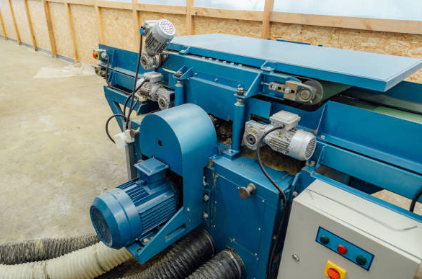What is chamfering machines?? A Comprehensive Guide
Chamfering machines are tools used in manufacturing and metalworking processes to create chamfers, which are angled cuts or bevels along the edges of a workpiece. These machines are essential for creating precision and smooth edges that improve the functionality and aesthetics of various products. In this comprehensive guide, we will explore the different aspects of chamfering machines and their applications in various industries.
The Purpose of Chamfering
Chamfering is a versatile process that serves multiple purposes in different industries. The primary purpose of chamfering is to remove any sharp edges or burrs that may be present on a workpiece. By creating a beveled edge, chamfering enhances safety by preventing cuts or injuries during handling or assembly. Additionally, chamfers can also improve the overall appearance of a product, providing a more polished and professional finish.
Types of Chamfering Machines
There are several types of chamfering machines available, each suited for specific applications and workpiece materials. Some common types include:
1. Manual Chamfering Machines
Manual chamfering machines are operated by hand and are suitable for smaller-scale chamfering tasks. These machines are often portable and easy to use, making them ideal for workshops or job sites where mobility is important. They are commonly used for chamfering edges of metal, plastic, or wood materials.
2. Semi-Automatic Chamfering Machines
Semi-automatic chamfering machines combine manual operation with automated features to improve efficiency and precision. These machines are often equipped with adjustable angles, speed controls, and automatic feeding systems. They are commonly used in larger-scale manufacturing processes to chamfer a high volume of workpieces quickly and accurately.
3. Automatic Chamfering Machines
Automatic chamfering machines are fully automated and are designed for high-volume production lines. These machines can chamfer multiple edges simultaneously and often feature advanced controls for precise angle adjustments and feed rates. They are commonly used in industries such as automotive, aerospace, and electronics manufacturing.
Applications of Chamfering Machines
Chamfering machines find applications in various industries and manufacturing processes. Some common applications include:
1. Metalworking
In metalworking industries, chamfering machines are used to create bevels on metal edges for improved weldability, assembly, and aesthetics. The chamfers created by these machines help in achieving strong and seamless joints in structures and components.
2. Woodworking
Chamfering machines are also used in woodworking to create decorative edges on furniture, moldings, and other wooden components. These machines can create chamfers of different angles and sizes, allowing craftsmen to achieve various design styles and finishes.
3. Plastics and Composites
Chamfering machines play a crucial role in the plastics and composites industry, where precise edge finishing is essential for improving product quality and functionality. These machines can handle various plastic materials and composites, ensuring smooth and burr-free edges.
4. Automotive Industry
The automotive industry extensively uses chamfering machines for creating beveled edges on engine components, gears, and other metal parts. Chamfering helps in reducing stress concentrations, improving assembly efficiency, and maintaining optimal performance.
5. Electronics Manufacturing
In electronics manufacturing, chamfering machines are used to create chamfers on circuit boards, connectors, and other electronic components. The chamfers aid in proper alignment during assembly, enhance soldering quality, and improve overall product reliability.
Choosing the Right Chamfering Machine
When selecting a chamfering machine, several factors should be considered:
1. Workpiece Material
The type of material being chamfered will determine the appropriate machine and cutting tools required. Different materials may require specific cutting speeds, feeds, and tool materials for optimal results.
2. Chamfering Requirements
Consider the desired angle, size, and finish of the chamfer. Some machines offer adjustable angles and multiple cutting tools to accommodate various chamfering requirements.
3. Production Volume
The volume of workpieces to be chamfered per day or hour will determine whether a manual, semi-automatic, or automatic chamfering machine is most suitable for the application.
4. Precision and Efficiency
For industries that require high precision and efficiency, advanced automatic chamfering machines with computer numerical control (CNC) capabilities may be the best choice.
In Conclusion
Chamfering machines are essential tools in various manufacturing industries, offering precise and efficient ways to create beveled edges on workpieces. Whether in metalworking, woodworking, plastics, automotive, or electronics manufacturing, chamfering machines play a vital role in improving safety, functionality, and aesthetics. By understanding the different types of chamfering machines, their applications, and factors to consider when choosing one, manufacturers can select the most suitable machine for their specific needs.

